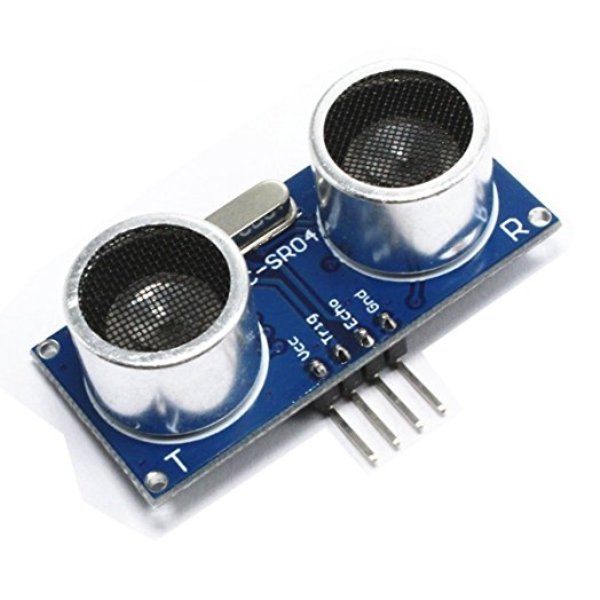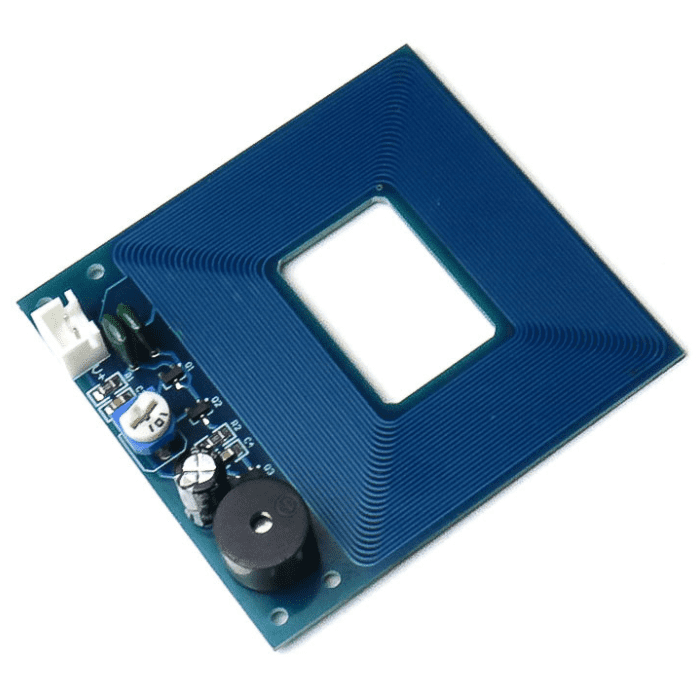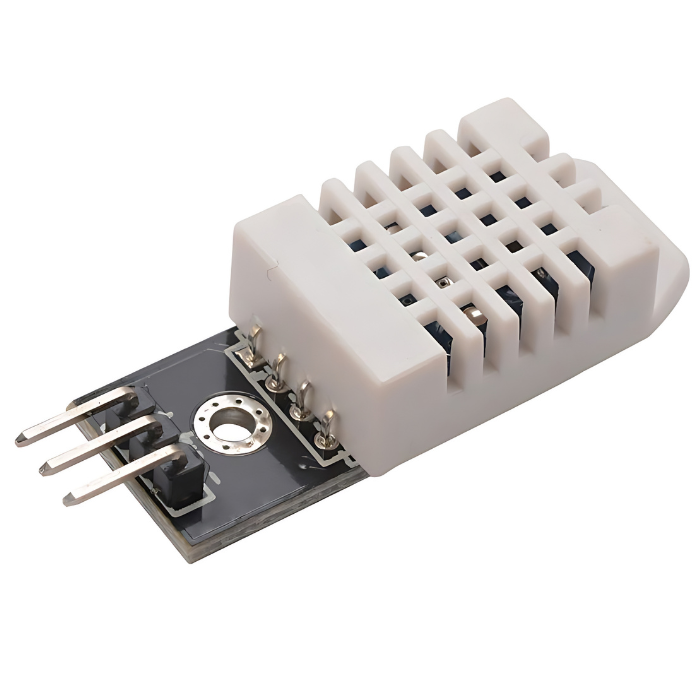Introduction
Sensors are like the backbone of IoT applications and products without them IoT won't work.
Sensors measure changes in physical parameters such as temperature, pressure, light intensity, humidity, etc., to transmit digital signals that can then be interpreted by a central processor or application software.
The different types of sensors used in IoT systems include;
- motion sensors for detecting movement;
- environmental sensors for measuring ambient conditions like temperature;
- general purpose analog-to-digital converters that convert continuous values into usable data streams;
- gas sensing technology to detect combustible gases and monitor air quality levels;
- proximity detectors such as infrared distance monitors which trigger alarms when an object is too close/far away from another item etc.
In addition to these hardware elements, there are various cloud technologies enabling remote monitoring –for example, machine learning algorithms on connected devices allowing automated information processing based on sensor data inputs received remotely via the internet connection.
IoT or the Internet of Things is the newest trend that’s been used for many products and appliances these days.
While it’s easy to dismiss it as the newest fad, IoT devices do have a huge potential to disrupt and revolutionize our lives and workflows and is indeed a technology that we need to pay attention to.
An IoT device is a physical object with sensors/actuators, processors, software and common communication ability that allows it to send and exchange information with other IoT devices, forming a collective network of smart systems.
These can then be used to set routines, reminders, and alerts and be used to completely automate current workflows effectively.
IoT devices can encompass many functions and features and can be broadly divided into based on what type of device it is - whether it is a
- Sensor device - like temperature, humidity, pressure, light, distance
- Actuator device - fans, blinds, motors, pumps, valves
- Communication device - hubs for Zigbee, Z-wave, Matter, WiFi router, etc.
For this blog, we will primarily be focusing on Sensor devices and different classifications of sensors in IoT, 15 types of sensors in IoT, and characteristics of sensors in IoT
What are Sensors?
Sensors are devices that provide an output signal based on measuring an environmental phenomenon such as measuring temperature, humidity, pressure, altitude, ambient light, distance etc.
These devices are used to give quantitative and qualitative measurements of an environmental factor for the purposes of monitoring data to either record or take action.
For example, a temperature sensor can be used to monitor the ambient temperature. Based on the temperature sensor’s measurement and output, heating or cooling can be enabled to bring the ambient temperature of the room to the optimal temperature.

Sensors in IoT
Sensors have been around for decades being used in many different applications. But recently, with the advent of IoT sensors, today must encompass the ability to process its data, and communicate with other sensors and platforms, forming a crucial part of the entire IoT ecosystem.
Classification of Sensors in IoT
Due to the sheer number of sensors available, let's explore the diverse world of sensors as we delve into the classification of different types of sensors in IoT for simplification classification of sensors in IoT is divided into 5 core classifications depending on how they work.
- Active and Passive Sensors.
- Contact and Non-contact Sensors.
- Absolute and relative sensors.
- Analog and Digital Sensors.
- Miscellaneous Sensors.
Also, read our blog Types of Proximity Sensor detailing 5 types of proximity sensors and their working principles.
1. Active and Passive Sensors
To work in the IoT device, active sensors require a specific external power source for example the GPS and ultrasonic sensors.
While, passive sensors can work with sufficient electrical impulses from their surroundings and don't need an additional power source. NFC tags, temperature sensors, and other devices are some examples.
2. Contact and Non-contact Sensors
To accurately measure any objects these contact sensors require physical contact. These include sensors like touch sensors, temperature sensors, strain gauges, etc. By directly touching the object these sensors provide accurate information about an object.
Non-contact sensors don't need to come into direct touch with the things being measured outside of them. Examples include optical sensors, magnetic sensors, infrared thermometers, etc.
3. Absolute and Relative Sensors
Absolute sensors, as its name suggests, provide an absolute reading of the stimulus. For example, thermistors always give out the absolute temperature readings
Relative sensors provide measurements relative to something that is either fixed or variable. Thermocouple is an example of a relative sensor, where the temperature difference is measured as opposed to direct measurement
4. Analog and Digital Sensors
Analog sensors give a continuous output signal that changes based on the measurement. Analog sensors include thermometers, pressure sensors, and light-dependent resistors (LDRs).
Digital sensors, on the other hand, collect measurements and convert them into digital signals, which are commonly represented as binary data and are easier to manage and understand. Examples are Ultrasonic sensors and Inertial Measurement Units.
5. Miscellaneous Sensors
Many more types of sensors may not necessarily fit into the above listed categories. These sensors will be classified as miscellaneous sensors. Example of these sensors include chemical, biological, radioactive, and other sorts.
read our blog explaining proximity sensors types, which provides comprehensive information about proximity sensors and their types. It covers various types such as capacitive, inductive, magnetic, optical, and ultrasonic proximity sensors.
15 types of sensors
1. Temperature Sensor
Temperature sensors are a type of device used to measure temperature. They allow us to accurately monitor and record changes in temperature over time, which is critical for many industries including manufacturing processes, food storage, medical applications and more.
Temperature sensors come in a variety of types such as thermocouples or RTDs (resistance-temperature detectors), each with their own unique advantages for different scenarios.
These devices offer enhanced accuracy levels while still being compact enough to fit into tight spaces where traditional measuring equipment may not be suitable.
Their widespread usage makes them an attractive solution due to the cost savings associated with reduced downtime as well as improved safety measures against excessive temperatures by providing early warning alarms before reaching unsafe thresholds.

2. proximity sensor
A proximity sensor is a device used to detect the presence of an object or person without physical contact.
It can be used in many applications such as security, automation and robotics. Proximity sensors have two main categories: active and passive.
Active sensors emit either infrared or ultrasonic energy which bounces back when it meets an obstacle thus providing detection capabilities even if there is no line-of-sight between them and the target object they are meant to detect, making these devices very useful for remote sensing purposes.
Passive sensors usually employ inductive loops that generate electromagnetic fields capable of detecting moving metallic objects within a certain range from their source point while ignoring non-metallic ones such as plastic containers or people's bodies; completely safe yet highly reliable solutions both indoors and outdoors!

Also, read our blog on the Working Principle of Ultrasonic Sensor detailing What is Ultrasonic Sensor: Working Principle & Applications.
3. Pressure sensors
Pressure sensors are important sensors of IoT that help in measuring and monitoring of high and low-pressure levels in any environment.
Pressure sensors provide accurate information in a variety of applications, including dangerous ones like drilling for crude oil. They are also used in advanced equipment like medical devices.
They provide improved performance with stability over long-term use while improving safety standards by providing real time feedback on the system’s operation status from remote control rooms.
Additionally, they offer an economical option due to their energy efficiency when compared to other advanced solutions available today and play a crucial role ensuring consistent results for commercial operations all around the world.
4. Humidity sensors
Humidity sensors measure the accurate humidity of a location to manage the climate, establish comfort levels, and monitor other environmental aspects.
Professional level humidity sensors work accurately and precisely in both home and commercial applications.
These sensors can identify changes at extremely precise levels as low as 0.1%. When it comes to functionality, less expensive options include things like temperature correction, while more expensive versions could have greater accuracy levels or longer functioning ranges.
They are becoming more and more well-liked since they can balance interior air quality by external circumstances, hence enhancing building energy efficiency.
As such, they are now a crucial component of any building's environmental management system!
5. Electro-optical sensors
Electro-optical sensors are an important part of modern automated systems. These sensors use visible and infrared light detection to take pictures and measure attributes like size, shape, and color with proper accuracy.
These sensors are the best for object detection or tracking in robotic vision systems.
Also, Electro-optical sensors are used in the military sector to measure the target, speed, and distance of targets using laser beam pulses and provide accurate information over long distances report of air disturbances like dust or fog.
Electro-optical sensors offer a reliable solution for industrial automation processes due to their improved performance when compared with traditional approaches including mechanical methods that rely on contact between two objects – something not always practical given safety restrictions at industrial sites these days.
6. Level sensors
Level sensors are essential tools used to measure the level of fluids, solids and powders. They provide accurate readings that facilitate industrial operations by allowing for efficient storage and monitoring of materials in tanks, hoppers and vessels.
Level sensors also help ensure hazardous or toxic substances remain within predetermined levels – ensuring safety protocols can be implemented correctly at all times.
There are various types of level sensor technologies available such as float switches, floats, ultrasonic transducers or pressure transmitters with each offering its own advantages depending upon application requirements.
With their competitive pricing models combined with reliable accuracy ratings, these devices have become invaluable assets to any modern manufacturing business looking to optimize production line efficiency.
While maintaining peak compliance standards across all areas where dangerous liquids may reside onsite achieving effective cost savings due to reduced wastage from overfilling & spillages alike making them true value-added components!
7. Image sensors
Image sensors are special digital components that capture light and convert it into a form the computer can understand.
Image sensors come in many forms, and have become increasingly important for everyday electronic devices such as cameras, phones, medical scanners, and security systems.
An image sensor typically consists of an array of millions or billions of photodiodes on a single chip which measure photons from incoming electromagnetic radiation to produce information about intensity levels within the scene being captured by the device.
This data is then used to create high-quality images with accurate color reproduction, low noise levels and greater clarity than traditional film photography could provide without additional effort from users.
8. Infrared sensors
Infrared sensors are devices that detect the infrared radiation emitted by objects within their field of view. They can be used to measure temperature, motion, and other environmental variables such as humidity or air pressure.
Infrared sensors have many applications including medical diagnostics, robotics navigation systems, security systems and industrial automation processes.
The optical head of an infrared sensor is sensitive enough to pick up both visible light from sunlight or artificial sources like lamps plus thermal energy created by living beings or machines - all without contact with them!
Their small size allows for installation in tight spaces wherever it’s needed most while providing accurate measurements whether long-distance viewing during day or night operations is necessary.
With improved sensitivity over past models they now make useable data available even when temperatures vary significantly between measuring points giving users a reliable picture about what’s going on around them at any given time.
9. Gas sensors
Gas sensors are very effective sensors for detecting the presence and quantity of gases in the environment.
These sensors are used in many sectors to monitor gases and maintain safety by detecting harmful gases such as methane and carbon monoxide. These sensors help prevent accidents and safety from those gases by giving early alerts.
Rapid technological advancements over the years have combined high sensitivity materials with tiny electronic packages outfitted with state-of-the-art digital communication systems that can be controlled remotely from any location in the world.
Gas sensors are now essential parts of many modern enterprises, providing increased product accuracy, reduced operating costs, and worker safety by averting hazardous situations brought on by hazardous gas leaks.
10. Accelerometers
In modern technology, Accelerometers are known as one of the most innovative components. Within a given range, these sensors can accurately track any acceleration in any direction.
Accelerometers are widely used in a variety of industries like consumer electronics, gaming controllers, health monitors, and other medical monitoring systems.
The benefits of these sensors are their tiny size that is made with silicon or quartz crystal. These sensors easily detect linear or gravitational motion by integrating MEMS capacitors.
11. Water Quality Sensors
Water quality sensors are best to check the health of water. These sensors measure things like pH, chlorine levels, dirt, dissolved solids, oxygen demand, conducts electricity and dissolved oxygen.
These readings are instrumental in maintaining water quality within parameters and ensuring compliance with industrial water chemistry standards. Additionally water quality sensors aid in developing models to evaluate water quality.
12. Smoke Sensors
Smoke alarms serve as lifesaving devices in both commercial settings. With the advent of the Internet of Things (IoT) these detectors have become more intelligent and user friendly. They can now be easily configured wirelessly and send alerts to smartphones.
Furthermore, they integrate seamlessly with home systems to enhance safety measures and facilitate evacuation during emergencies. Modern smoke detectors are equipped with fire protection functionalities, for security.
13. Gyroscope sensors
Gyroscope sensors track and measure an object's rotation speed and direction. Gyroscopes detect tilt and sideways orientation, whereas accelerometers only record straight motion.
This makes them useful for applications where human navigation is challenging. Accelerometers and gyroscopes both are used in consumer electronics to measure motion precisely. Gyroscopes measure three types of angular movements: yaw (horizontal rotation), pitch (vertical rotation), and roll (horizontal tilt from the front).
Using the Coriolis force principle, they converts rotation rate into electrical signals. The sensor has a vibrating crystal element that detects changes in orientation. These changes measure external rotational forces and calculate angular rotation.
14. Optical Sensors
Optical sensors transform light into electrical signals, allowing them to measure some of light-related parameters and interpret them in a manner that electronic equipment can understand.
These sensors may be used to count, detect, and locate objects without the need for direct physical contact. There are two types of optical sensors: external, which gather and transmit specific amounts of light, and internal, which measure bends and small changes in direction.
They can measure a wide range of properties, such as temperature, speed, liquid levels, pressure, displacement, vibrations, chemical composition, force, radiation, pH, strain, and fields such as acoustic and electric.
Optical sensors are essential tools in industries ranging from automation and medicine to environmental monitoring, thanks to their accuracy and versatility.
15. Hall Effect Sensors
A Hall effect sensor is a type of magnetic sensor that detects the strength and direction of a field of magnets before converting it into an electrical signal for processing.
These sensors are valued for their wear-free, non-contact operation, which results in their extended life and low maintenance requirements. These sensors can detect direction, speed, and position. Hall effect sensors are used in the automotive industry to detect engine position, track seat and belt positions for airbag management, and monitor wheel speed for anti-lock brake systems.
When the magnetic flux density around the sensor hits a specific threshold, it produces an output voltage known as the Hall voltage.
Hall effect sensors are commonly used in consumer electronics, industrial automation, and automobile manufacturing.
Characteristics of Sensors in IoT
Now, let's discuss the different types of sensors in IoT and their characteristics in detail;
- Static
- Dynamic
Let’s discuss these static and dynamic characteristics of sensors in detail;
Static Characteristics of Sensors:
The static characteristic of a sensor describes the relationship between the input and the output of a sensor concerning a static input signal.
If you understand the static characteristics it will help you in selecting the appropriate sensor for a specific application and assessing its performance in providing accurate and reliable measurements under steady-state conditions.
The properties of the dynamic characteristics are;
Accuracy: Accuracy is about how well-measuring tools can give a result that's close to the true value being measured.
It includes both systematic errors (like bias) and random errors (like precision) in the sensor's measurements.
Accuracy shows how correct the output is compared to a more trusted system. Accuracy can be measured by the absolute and relative errors.
Absolute Error = Result - True Value
Relative Error = Absolute Error / True Value
Discrimination or Resolution: Resolution refers to the smallest change in input that a sensor can detect and measure accurately.
Resolution is a key factor when choosing sensors. Higher resolution means the sensor can notice smaller changes in the input. When the increase is from Zero, that is called Threshold.
For example A standard ruler has a precision of about 1mm, while a vernier caliper can measure with a resolution of 0.0001 inches.
Range: A sensor's range indicates the minimum and maximum values of the input it can correctly measure.
To achieve accurate readings, keep the sensor within its stated range. Otherwise, range errors arise when the sensor's readings exceed the operational range.
Sensitivity: Sensitivity is defined as the ratio of output (Y) to input change (X). A higher sensitivity indicates that the sensor is more sensitive.
It is critical for understanding a sensor's static properties. A ideal sensor would have consistently great sensitivity independent of the environment.
For example, the speakers we buy for our home entertainment system may have a sensitivity rating of 79 dB Signal Pressure Level per Watts per meter.
Linearity: Linearity refers to the degree to which a sensor's output follows a straight line when plotted against its operating input range.
It is established via the calibration curve, which compares the sensor's output and input amplitude under specific conditions.
Precision: Precision is the consistency with which a measuring device reads the same quantity when measured repeatedly under the same conditions.
It is important to consider how well subsequent readings agree, rather than how near they are to the genuine value.
Precision refers to the variation in a set of measurements, and it is required but not sufficient for accuracy. A high-precision sensor produces closely packed output values.
Drift: Drift is the difference between a sensor's measurement and a specific reading when it's held steady for a long time.
A sensor's reading may fluctuate if it remains at a certain value for a long period of time.
If the original reading was zero, the change in output when the input remains constant is referred to as zero drift, if the initial reading was at the highest value, it is referred to as full-scale drift.
Changes in temperature, pressure, humidity, or the wear and tear or age of the sensor itself can all contribute to drift.
Hysteresis (backslash): Hysteresis occurs when a sensor's input-output curves don't align as the input changes from small to large (forward stroke) and back again (reverse stroke).
In simpler terms, for the same input signals, the sensor's output signals differ, creating hysteresis.
Dynamic Characteristics of Sensors:
The dynamic characteristics of the sensor refer to the sensor's output changes when the input changes. The dynamic characteristics of a sensor are described by its response to specific standard input signals. Because you can easily find out how the sensor reacts to a standard input signal through experimentation. There's a specific connection between how the sensor reacts to the standard input signal and how it reacts to any input signal.
In short, The dynamic characteristics are figured out by analyzing how the sensor reacts to different input waveforms that vary over time. Dynamic characteristics arise because of the existence of energy-storing elements like masses, inductors, and capacitors (both electrical and thermal).
If you understand the dynamic characteristics of sensors it will help yo to select the most suitable sensor for a particular application and optimize its performance within the system.
The properties of the dynamic characteristics are;
- Zero-order systems: Immediate response to input change. When there's a sudden change in input, the output immediately reaches a new steady-state level. This rate depends on how big the input change is.
- First-order systems: First-order systems respond like they're growing or shrinking in a curved, gradual way when you change the input. The time constant (τ) tells you how fast a first-order system reacts to changes. After about one time constant, the system has changed by about 63% of its final amount.
- Second-order systems: This responds by swinging back and forth like a pendulum after a change in input. And swinging eventually settles down to a steady level. The natural frequency of a second-order system is how fast it would swing back and forth if there were no slowing down.
Conclusion
In conclusion, many types of sensors are available on the market designed to accurately measure and report various environmental stimuli.
These sensors can be combined with a processor and a standard communication protocol to turn the device into a smart device or IoT product, turning into a collective, intelligent node in a wider network of smart devices.
If you appreciate our work don't forget to share this post and leave your opinion in the comment box.
Please do check out other blog posts about Popular Electronics
Make sure you check out our wide range of products and collections (we offer some exciting deals!)













